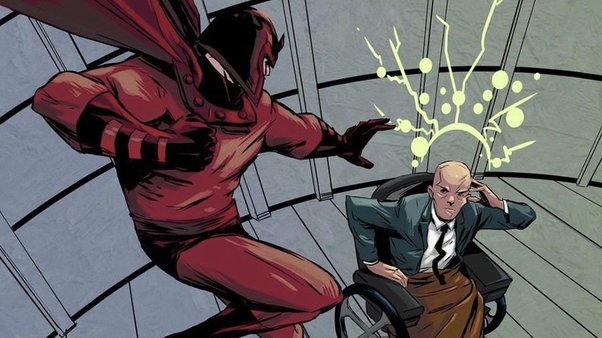Ant-Man and the Wasp: Quantumania has been out in theaters for a while – and the film is HUGE fun!
It’s no secret that the “big bad” villain in the movie is Kang the Conqueror, but we won’t say anything more about his motivations or machinations.
(That would be a “spoiler.”)
Still, a lot has been said already about Kang (and actor Jonathan Majors), with his introduction as the next major antagonist in the Marvel Cinematic Universe. We’re talking Thanos-level malevolence here.
Understandably, people want to chat about Kang the Conqueror–his backstory in the comics, potential connections to MCU shows and films, his powers and motivations, and much more. But we won’t dive too deeply here, to avoid any spoiler territory. (If you’re curious, click on any of the links in this paragraph and speculate away.)
All this talk about the next new villain got me thinking about teaching. If teachers are like superheroes, then who plays the “villain” role?
Who is YOUR archenemy?
Or at the least, who’s your rival?
Or maybe just someone who bugs you. Whether they know it or not, sometimes this person drives you nuts.
To help reflect on educational antagonists, look at classic superhero/villain pairings.
Sometimes they are complete opposites. Superman is super-strong and a “boy scout.” Lex Luthor is super-smart and a malicious “man-child.” Or contrast the stoic, calculating Batman with the crazy, maniacal Joker.
Archenemies can also be too much alike. Their mutual strengths create immediate conflict. Think of Wolverine and Sabretooth, both with claws, feral fighting skills, and healing factors. Or consider the intellectual enmity between Mr. Fantastic and Doctor Doom.
Another source of friction is a fundamental difference in ideology. Professor X seeks peaceful coexistence between mutants and humans, whereas Magneto prefers violent uprising and mutant dominance, no matter the cost. Captain America and Red Skull epitomize the Allies vs. Axis sides of World War II.
Remember, these examples are fiction. Superhero/villain matchups are mere illustrations for the types of conflict that can occur between two real people. I sincerely hope any opposition in schools is much less vindictive and destructive.
As teachers, we should use moments of disagreement as opportunities to model healthy communication and compromise. Remember, your students are watching!
Ideally, we can seek “win-win” solutions.
That said, something (or someone) that is unethical or illegal should NOT win.
I remember a high school principal explaining one experience he had where “win-win” was not a viable option. Their school building was facing increased pressure and influence from violent gang activity. This principal shared how their school staff, students, families, and community banded together to find a “win-lose” solution: they were going to win; the gangs were going to lose (and leave).
Hopefully, the day-to-day conflicts and friction teachers experience are not as dire. And in any case, we can focus on productive (and creative) outcomes, with student learning and growth as the ultimate goal.
Here are just two resources for working with others (including those you can’t stand):

-Enneagram Personality Types and Relationships
-Enneagram Types at Work
–Workplace Triggers based on Enneagram Type
–Dealing with People You Can’t Stand (book)
-Dr. Rick Brinkman: The Top 10 Difficult People (video)
-“Ten most unwanted list” and Summary from What You Will Learn (podcast/blog)

Imagine what would happen if some of our superhero/villain pairs paused to review these materials. Maybe they could even sit down and work out their differences.
But what about YOU?
And who exactly is a teacher’s REAL archenemy? Moreover, how do we “fight” them?
If you want the actual answer and action steps, check out Chapter 8 in my book – Teaching Is for Superheroes!
(That’s called a “teaser.”)










